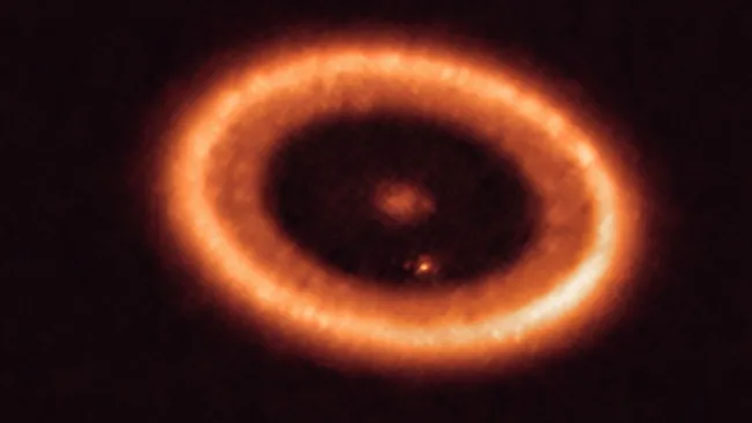Astronomers discover new planet formation

Technology
Would be named as PDS 70D
(Web Desk) - Astronomers have detected the formation of a potential third planet within the protoplanetary disk surrounding the young star PDS 70, located approximately 400 light-years away from Earth.
This discovery follows the previous identification of two planets in the same disk. The observations were made possible by the James Webb Space Telescope (JWST) as part of the MIRI mid-infrared Disk Survey (MINDS) project.
Using JWST's Near Infrared Camera (NIRCam), researchers observed a significant spiral stream of material contributing to the growth of one of the previously discovered planets, PDS 70C.
This giant planet is enveloped by its own disk of material, and the spiral stream is feeding it, potentially leading to the birth of its moons.
The PDS 70 system is of particular interest to astronomers due to its youth; both the protostar and its protoplanetary disk are estimated to be no more than 5.5 million years old.
This makes it a rare opportunity to study planetary formation processes in their early stages, contrasting with our much older solar system, which is approximately 4.5 billion years old.
"We found new evidence for the presence of a third planet in the system, which was proposed based on VLT observations," Valentin Christiaens, MINDS team member and postdoctoral researcher in astrophysics at KU Leuven and the University of Liège has revealed.
"Furthermore, the new infrared measurements we obtained for the two known protoplanets suggest the presence of heated material around them — which may be the building blocks for moons forming around them," Christiaens added.
Potential third planet's properties aren't discovered yet by the researchers. It would be named as PDS 70D upon final confirmation and will remain shrouded in a vast amount of dust.
"What is interesting is that this separation places it near 1:2:4 mean-motion resonance with planets PDS 70B and PDS 70C. This means its orbit would be almost exactly twice as short as B and four times shorter than planet C, respectively," said Christiaens said.


